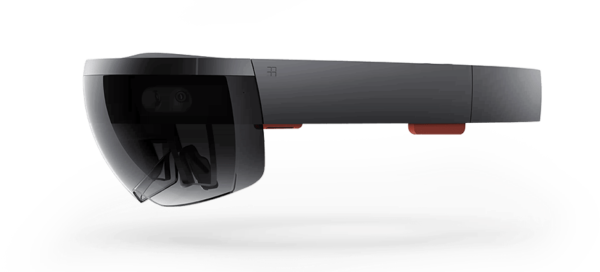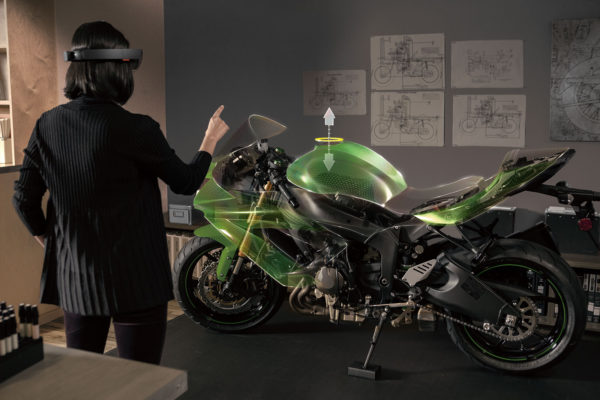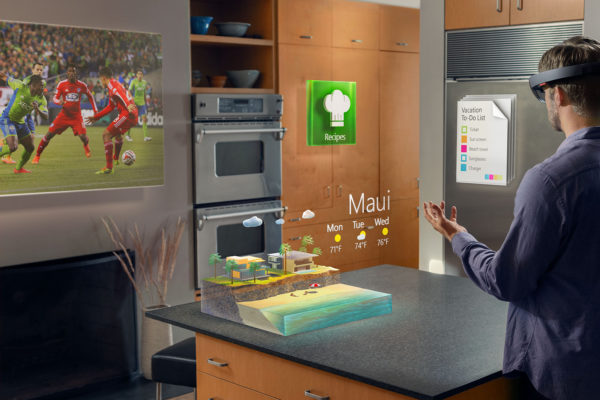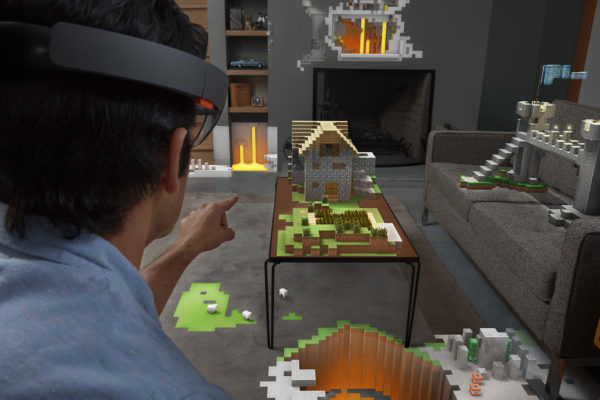Microsoft HoloLens: Everything You Need To Know
Virtual reality has already come a long way in the technology industry. With the success of the Oculus VR, many other companies like Sony and Samsung have realized the potential on VR. These companies have invested a huge sum of money on research and development of the virtual reality technology for the past few years. And now, Microsoft took the challenge to bring the game a notch higher with its take on VR: the HoloLens.

Having an excellent record of being a successful company in computing, Microsoft joined the VR bandwagon and unveiled the curtain in its most intriguing project yet for the past decade. The HoloLens is a virtual reality headset that is much similar to the Oculus Rift and Samsung Gear VR, but it adds augmented reality parallel to its VR capabilities – bringing the VR experience on a real-life dimension. This is possible thanks to the transparent viewing panel of the HoloLens, powered by Windows Holographic, an augmented reality technology developed by Microsoft. Using the Windows platform to leverage blazing-fast computing, the HoloLens is able to transform the way we interact with on-screen objects with real-time augmented reality. During the demo shown on the recently held Windows 10 event last January 21, the HoloLens is able to create computer-aided design in 3D. The user can manipulate the objects in real time – this is very useful especially in CAD projects which requires a three-dimensional perspective to get it right.

Unlike the Rift and Gear VR which display content on a 360-degree view, the HoloLens shows objects in 3D as if they were floating in space. As shown in a promotional video for the HoloLens, it demonstrated the capability to display a full desktop in 3D – calendar events, weather information, and to-do tasks are some of the widgets that can be seen in 3D using the HoloLens. Now that’s a dream turned to (virtual) reality.
The HoloLens relies on the Windows Holographic platform, meaning it delivers content on a holographic way. Unlike most VR headgear, it has a transparent panel that enables its user to view his surroundings along with the on-screen objects that seem to float. These “floating” objects are fully interactive and can be manipulated in real time, thanks to a very low latency. The low latency helps to bring motion sickness to a minimum by reducing the “delay” between the interaction of the user and the on-screen objects. It is known that motion sickness brought by VR headsets was one of the many concerns raised when VR was still in its infancy.

Gaming is one of the highlights of the HoloLens’ features. The famous 8-bit graphics game, Minecraft, was shown in the HoloLens promotional video, with the user interacting with its bits and blocks. Microsoft takes a chance to develop the HoloLens into the most interactive gaming platform in the near future. Because Windows supports the majority of computer games that we play, the HoloLens might be the best thing to happen in the gaming community to deliver an immersive gaming experience that was unimaginable in the past.

The HoloLens will be changing the way we work and play. The VR community is keeping its eyes on it, and the hopes are very high. Although it is still in the development phase, the HoloLens shows a great potential for the future of VR and of the modern-day computing as well. It may not be in our hands for the moment, but the next several months will be crucial to its release to consumers who are craving for a unique VR experience.
For more information on the Microsoft HoloLens, please visit the following websites:
https://virtualrealitytimes.com/2015/02/04/microsoft-hololens-everything-you-need-to-know/https://virtualrealitytimes.com/wp-content/uploads/2015/02/d76d1d6c-a4e6-41d2-bc43-c9b49041a219-600x272.pnghttps://virtualrealitytimes.com/wp-content/uploads/2015/02/d76d1d6c-a4e6-41d2-bc43-c9b49041a219-150x90.pngHoloLensMicrosoftVR HeadsetsVirtual reality has already come a long way in the technology industry. With the success of the Oculus VR, many other companies like Sony and Samsung have realized the potential on VR. These companies have invested a huge sum of money on research and development of the virtual reality...John Marco OscilladaJohn Marco Oscillada[email protected]SubscriberVirtual Reality Times - Metaverse & VR
